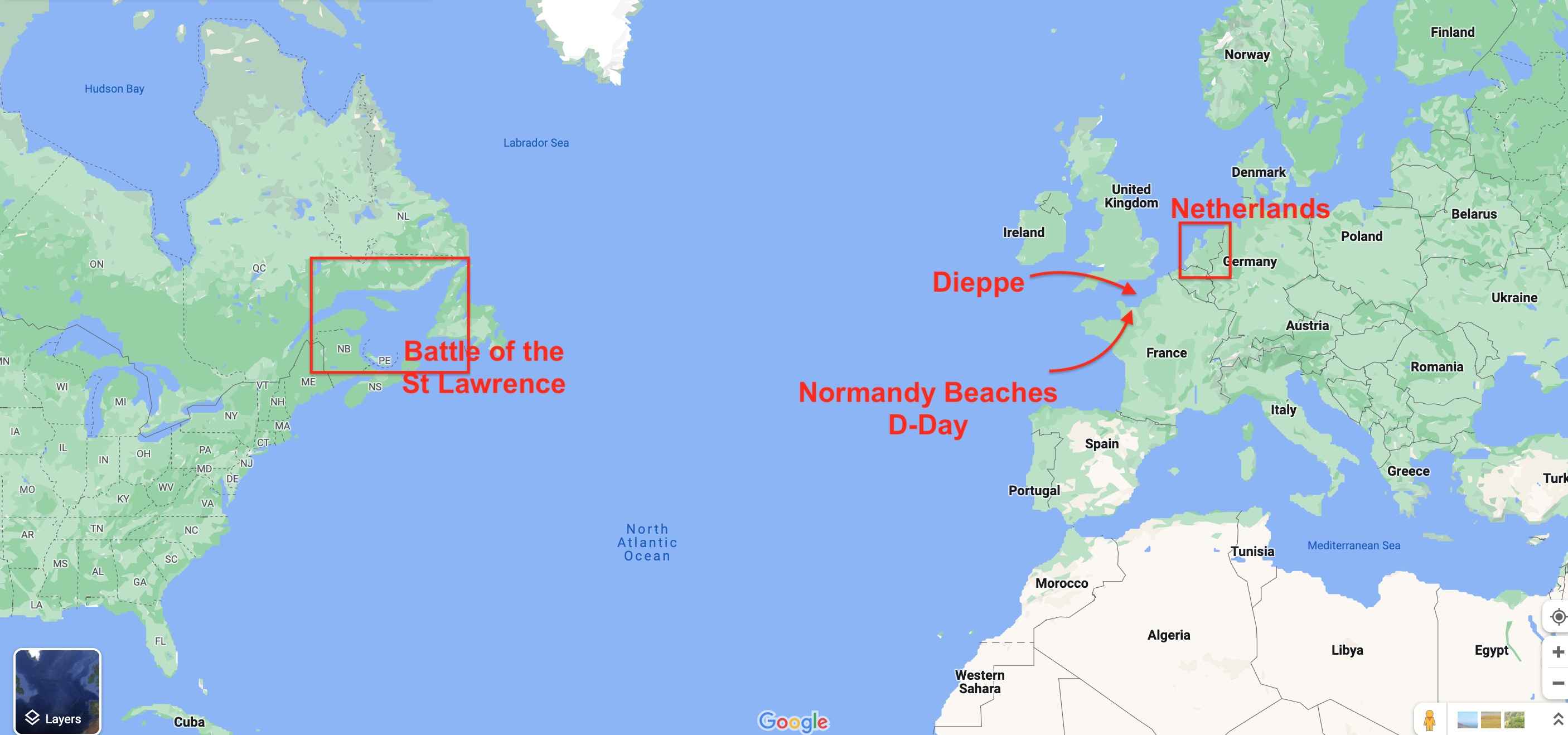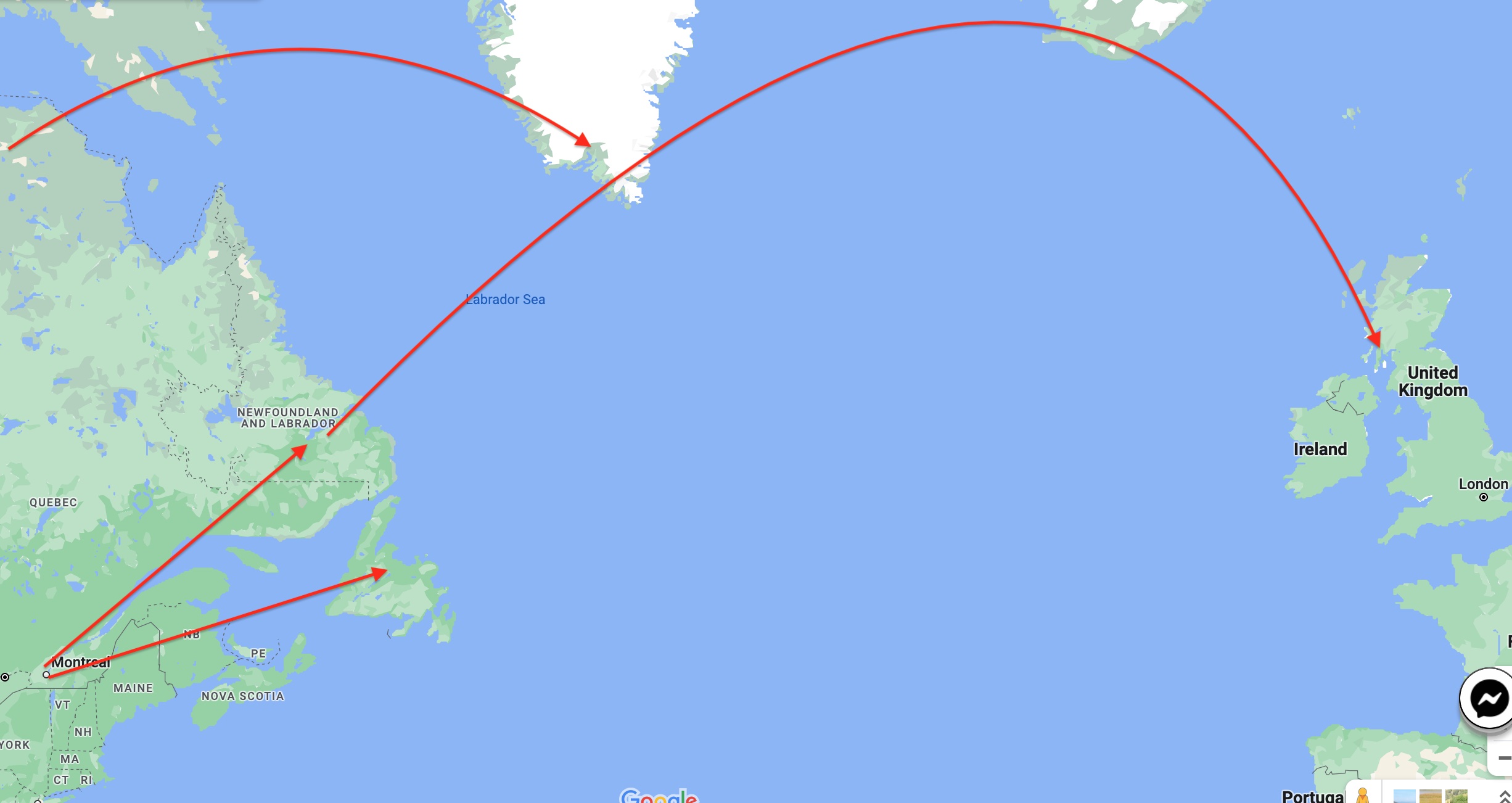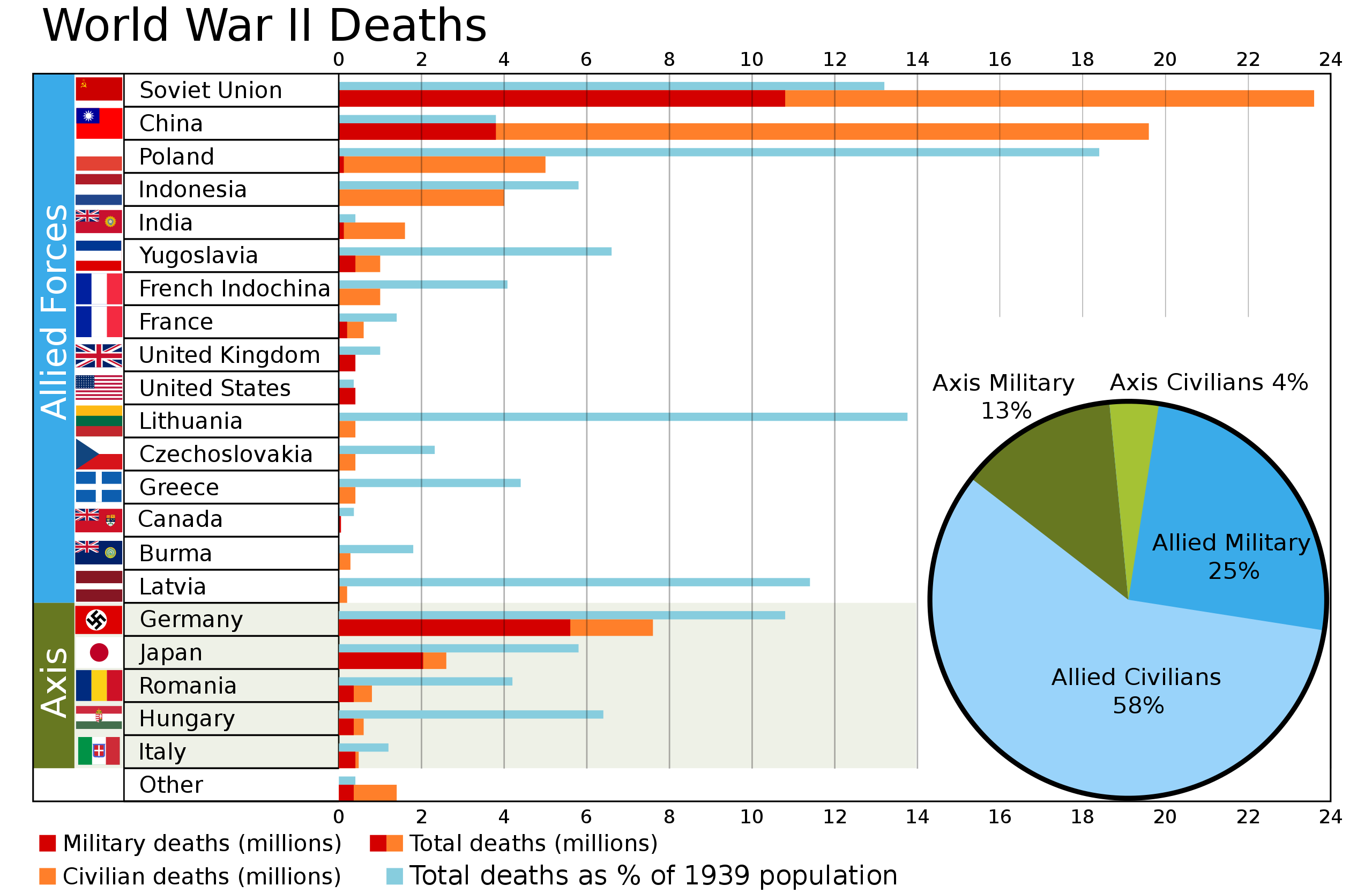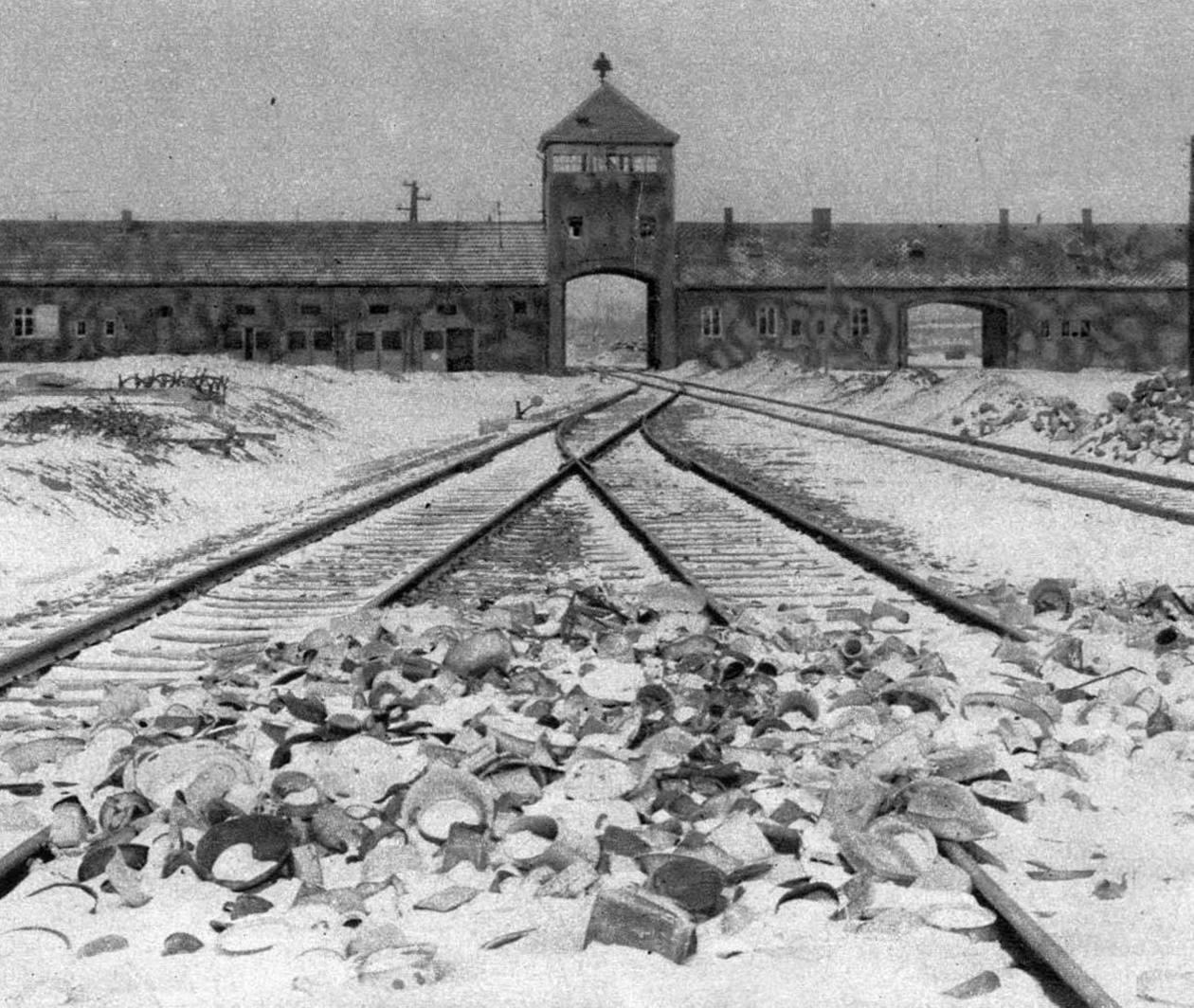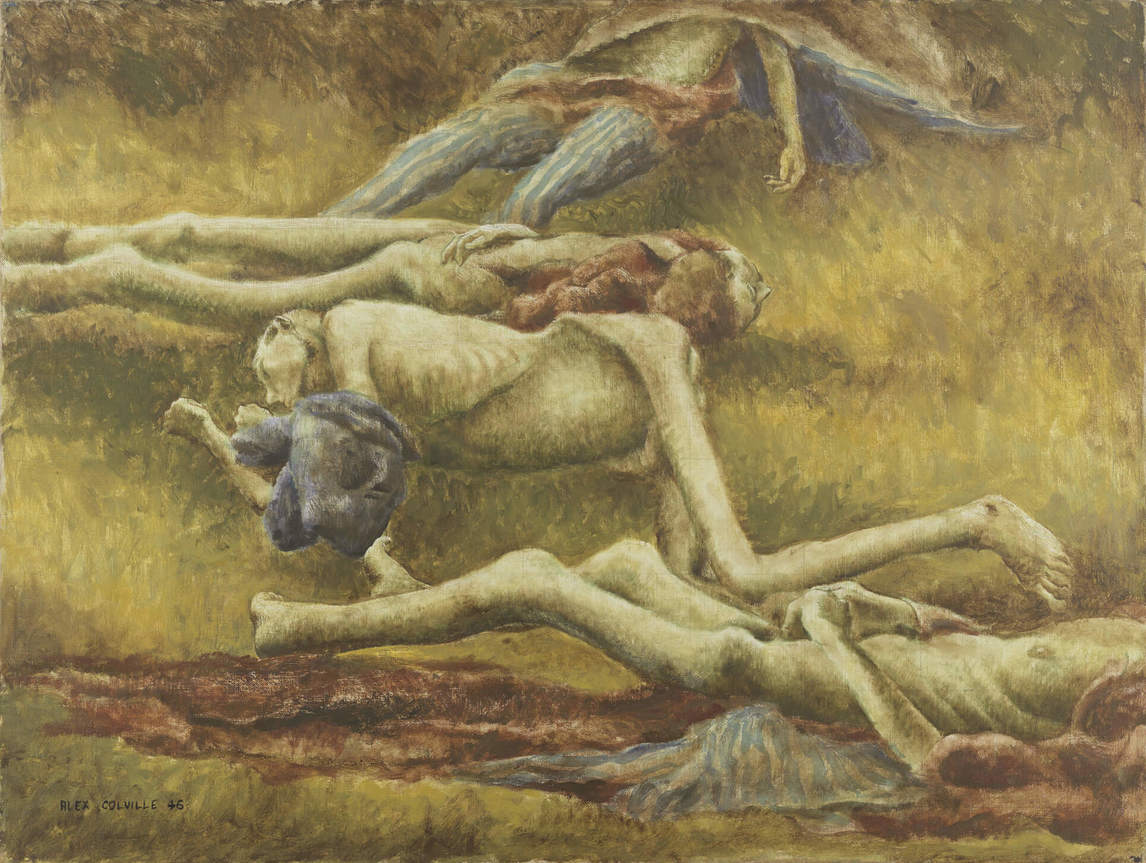Overview of World War II (1939-1945)
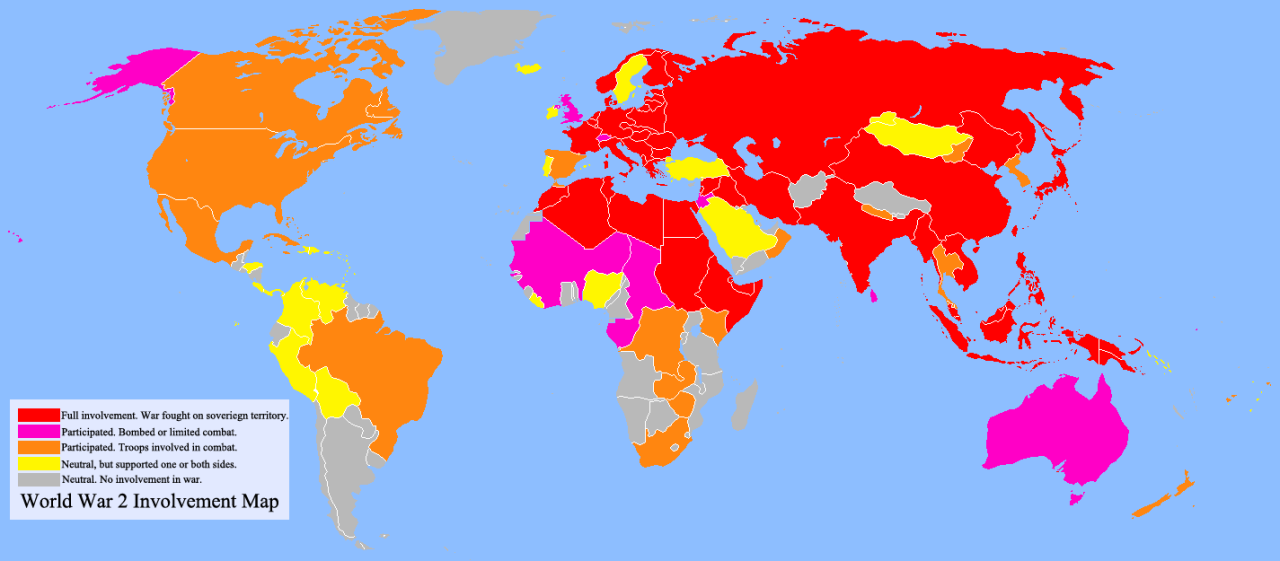
World War II (WWII or WW2), also known as the Second World War, was a global war that lasted from 1939 to 1945. It involved about 30 countries "including all the great powers" forming two opposing military alliances: the Allies and the Axis. In a state of total war, directly involving more than 100 million people from more than 30 countries, the major participants threw their entire economic, industrial, and scientific capabilities behind the war effort, blurring the distinction between civilian and military resources. World War II was the deadliest conflict in human history, marked by 70 to 85 million fatalities. Tens of millions of people died due to genocides (including the Holocaust), premeditated death from starvation, massacres, and disease. Aircraft played a major role in the conflict, including in the use of strategic bombing of population centres, and the only uses of nuclear weapons in war.
Even though many countries were directly involved almost every country was in some way affected.Wikipedia, World War II
World War II was the largest event of this type in human history. It dates are considered from 1939 to 1945. Monuments to the War in the Czech Republic say 1938 to 1945 because they were annexed by Germany 1 year earlier.
![]() World War II General Statements
World War II General Statements
![]() Displaced Persons Camps in Europe
Displaced Persons Camps in Europe
World War II (short version) Questions
- How does World War 2 compare to other major conflicts or wars in the history of the world?
- In 1922 Germany experienced hyperinflation. What do you think hyperinflation was and why did it damage Germany so badly?
- German economy in the 1930's:
- What happened to Germany’s economy and its unemployment rate in 1932?
- The bad economic conditions in Germany opened the door for the rise of Hitler and the Nazi party. What do you think Hitler promised the people of Germany?
- Foreign Policy
- What was Germany’s major foreign policy goal in 1934?
- b) Why do you think this policy was sure to lead to conflict? Explain your answer.
- Italy and Germany after 1922
- After 1922 who ruled Italy and what type of government was it?
- Italy expanded their territory by taking over which country?
- What do you think Italy and Germany had in common that led to make an alliance with each other?
- In the late 1930’s Spain struggled though a civil war. Which countries supported the rise of their Future dictator Franco?
- Japan
- Where did Japan expand in 1937?
- What was the brutal side of their expansion? Give 3 specific examples of what the armies did.
- List in order the countries/ territories taken over by Germany.
- _____________________________________
- _____________________________________
- _____________________________________
- _____________________________________
- _____________________________________
- _____________________________________(When this country was taken over World War II started)
- Most of the rest of Western Europe was taken over soon after.
- War Tactics
- What was the Blitzkrieg? (1940)
- Why do you think it was so effective?
- In 1940 The British withdrew their troops from France. Why do you think they did that?
- Combatants:
- What major countries form the Axis powers?
- b) What major countries form the Allies?
- Resistance groups form in all countries occupied by the Nazis. Give 2 examples of what these groups do.
- On June 22, 1941 Operation Barbarossa is launched. What is its goal?
- What siege/battle did the Nazis launch in 1941 that ended up with over 1 million dead?
- What did the Japanese do in December 1941 that brought the United States into the war?
- Japan continued to conquer more countries. Where were these countries?
- Name 3 specific crimes against humanity the Japanese carried out?
- What was the purpose of the concentration camps set up by the Nazis across Europe?
- What was the Atlantic Wall and what was its purpose? (Note: you can still see parts of this defense system today)
- Which countries did the Allies recapture in Africa when they first invaded?
- The Eastern Front
- In 1943 where did the Nazis experience their first major military setback?
- What significance did this setback have for the direction of the war?
- In 1943 where did the Allies (including Canadians) launch their first invasion of Europe?
- On June 6, 1944, the Allies landed in huge numbers on the beaches of Normandy. This was called D Day. What was the importance of D Day for the war?
- What organization was formed as a result of the war ending?
- Endings
- What happened in Germany on April 30, 1945?
- What is the impact of this event of April 30? What happened on May 8, 1945?
- The USSR and the United States joined forces to defeat Japan. Finally atomic bombs were dropped on 2 Japanese cities.
- Name the two cities.
- The two bombs forced Japan to surrender. When did that happen?
- Overall
- What is the approximate death toll from the war?
- What category of people were killed in the greatest number?
- What happened to many German prisoners of war?
- At the end of World War II which two countries emerged as the superpowers of the world?
ANALYSIS QUESTIONS
- Name three important events in World War II. Explain what significance each one had for the war and the history of the world.
- Why do you think more civilians died in the war than soldiers? Explain your reasoning.
- Why do you think there were so many human rights abuses and barbaric atrocities that took place in the war when it didn’t help anyone win the war?
